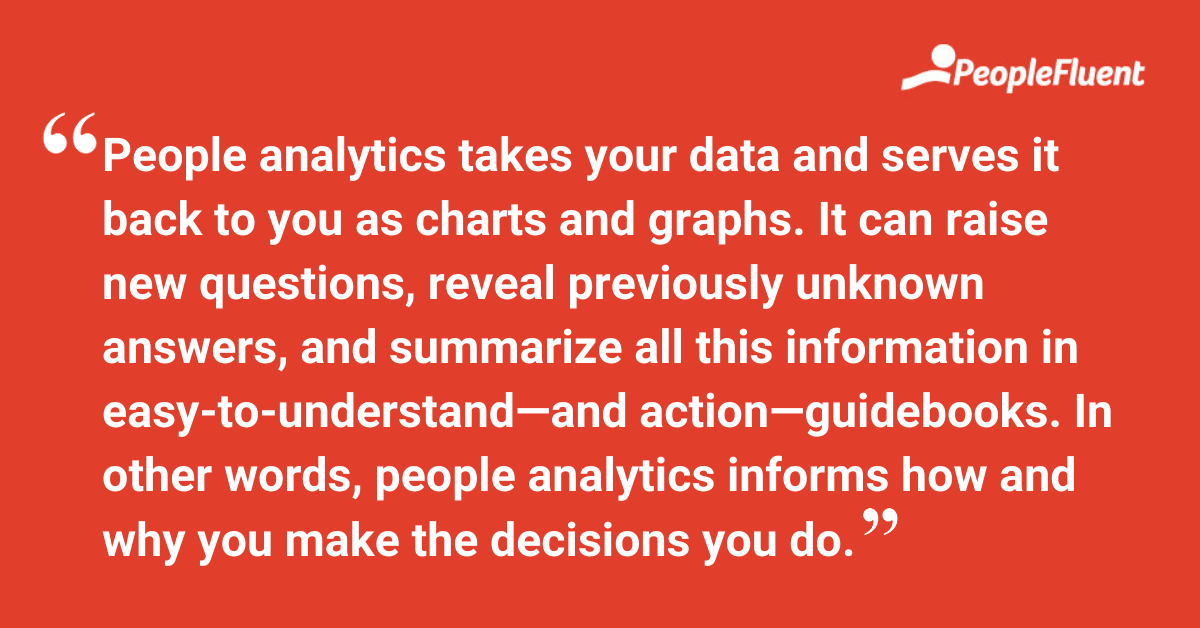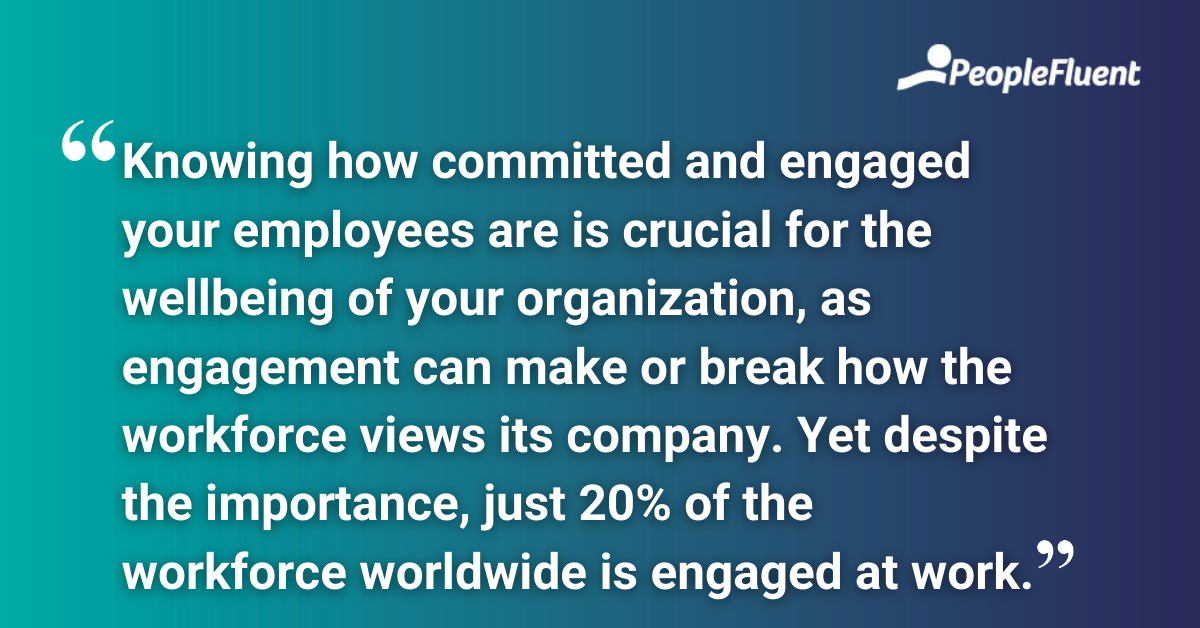Published: Feb 8, 2022Time to read: 4mins Category: Insights
Getting the Most From Your People Analytics: 2 Key Metrics to Start Tracking
The sheer volume of data available to modern organizations can be overwhelming. People analytics can help make these insights easier to digest, but you’ll need the right strategy in place. As we explore in this article, two key metrics provide a great place for people analytics newcomers to start.
Without people analytics to help cut through the large amount of data that an organization can generate, it may not even be obvious how individual data sets actually relate to each other. For example, you may want to find a connection between employee engagement and levels of training. To answer this question, people analytics not only looks for patterns in individual data sets, but it also helps you look for correlations between those data sets and presents the findings to you in an easy-to-understand way.
Analytics will transform the wealth of data you have into a far clearer picture of the complex machinery of your business and give you the information you need to fine-tune it.

Using People Analytics to Make Insights Digestible
Your people analytics platform presents insights in a consumable way. Looking at raw data won’t tell you much, but all the information you need is in there once the data is sifted and presented correctly. People analytics takes your data and serves it back to you as charts and graphs. It can raise new questions, reveal previously unknown answers, and summarize all this information in easy-to-understand—and action—guidebooks.
In other words, people analytics informs how and why you make the decisions you do.
YOU MIGHT ALSO LIKE | ‘3 Actionable Steps to Shape Your People Analytics Strategy’
Getting the Most From People Analytics: Key Metrics
When implementing a people analytics strategy, you need to know the most relevant metrics to make the best use of your data. Defining your metrics will help you to visualize your data, provide information on whether the strategy you have in place is successful, and how to optimize your results. We see two key areas, with accompanying metrics:
1) Diversity and Inclusion
According to reports, more diverse workforces show an up to 20% increase in overall innovation and a 32% increase in productivity.
Policies of diversity and inclusion have a measurable impact on your employees, too. Deloitte research shows that organizations with an inclusive leadership experience a 17% increase in team performance, a 20% increase in team decision-making quality, and a 29% increase in team collaboration. These numbers speak for themselves, and assessing your DE&I metrics makes good sense.
Whether through compliance with local labor laws or as part of the work of a dedicated DE&I team, you need to be actively benchmarking where your organization sits today in order to understand whether you’ve got a problem. This usually means measuring not only who you’re hiring, but also, for example, examining pay disparity and promotion rates across ethnic and gender groups.
It’s also about examining how your organization deals with other diverse talent pools, such as veterans, people with disabilities, and even people of different ages and education brackets. Organizations need to be more proactive in tackling diversity, equity, and inclusion—and people analytics can help!

HANDPICKED FOR YOU | ‘Want to Focus Your People Analytics Strategy? Start With the End in Mind’
2) Employee Engagement
Knowing how committed and engaged your employees are is crucial for the wellbeing of your organization, as engagement can make or break how the workforce views its company. Yet despite the importance, just 20% of the workforce worldwide is engaged at work. If your organization is suffering from an engagement issue, data could help you get to the root of the issue and take steps to alleviate problems.
Using data, businesses can drive employee experience. Measurements can be taken from employee engagement surveys, giving you an idea of which processes should be streamlined and which changes can be actioned. Digging deeper, analytics allows you to spot trends across departments and teams to check engagement levels. And that’s information you can use to make changes across your organization.
Discover how to make people analytics work for your organization
You don’t need to be a data guru or statistician to enjoy the benefits of people analytics—learn more in our guide filled with advice and best-practice guidelines.